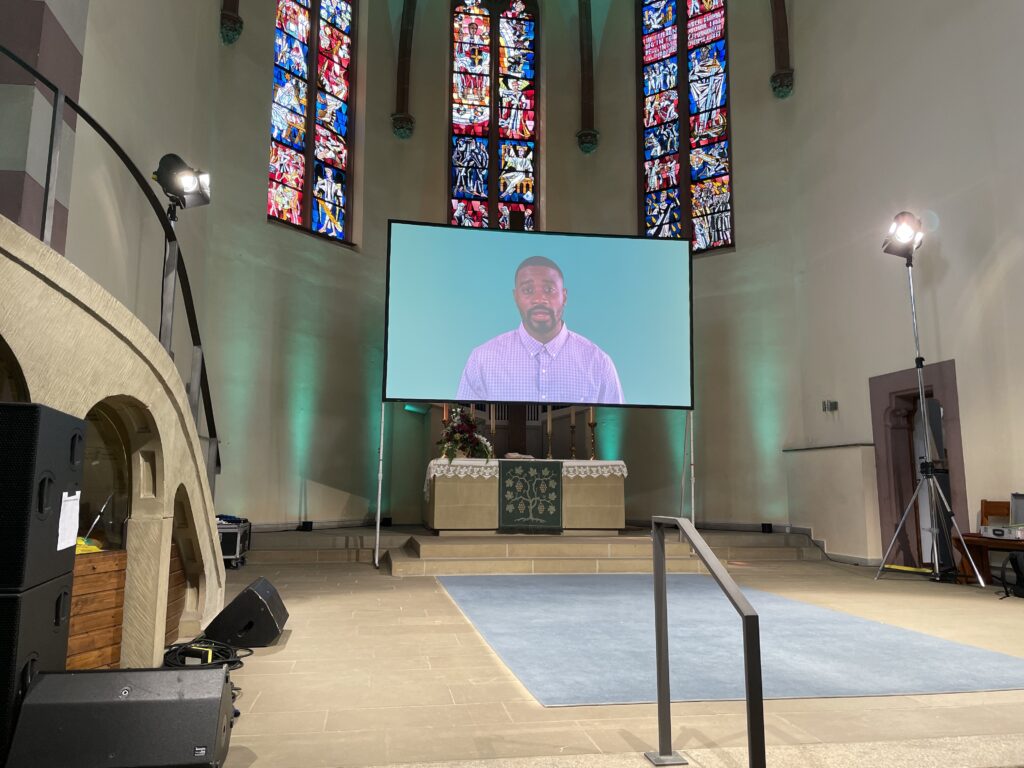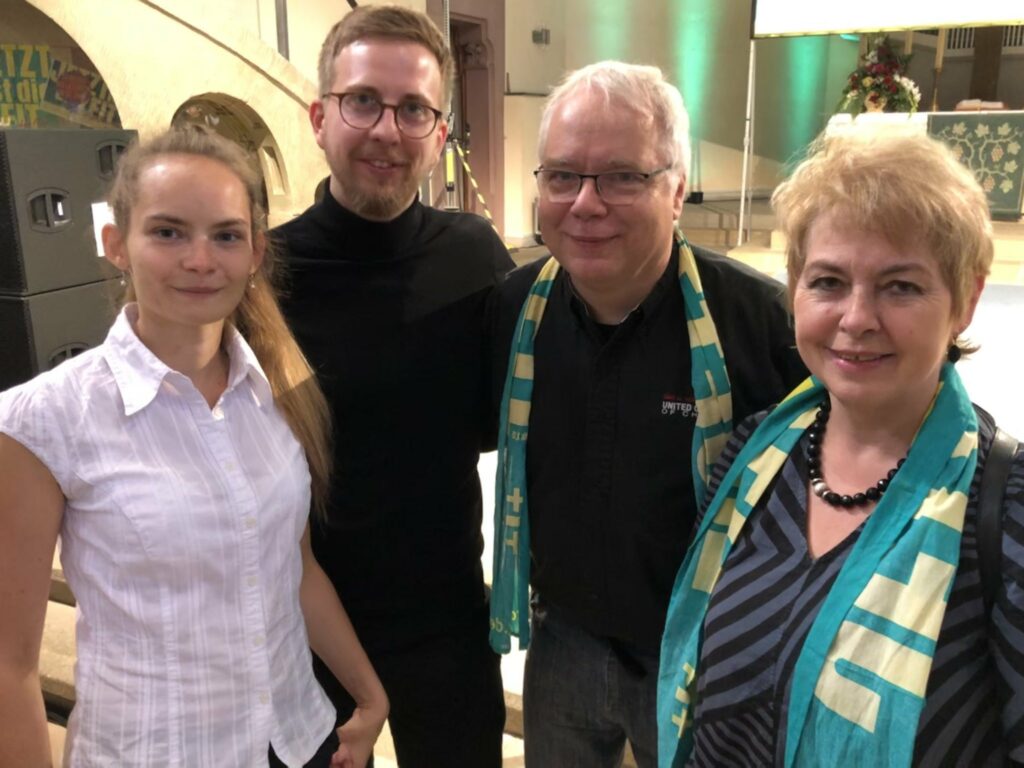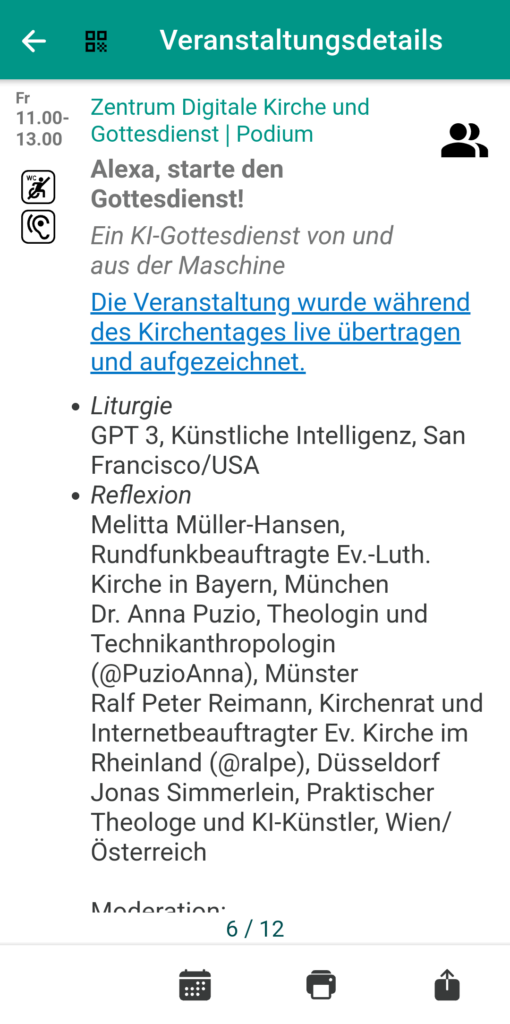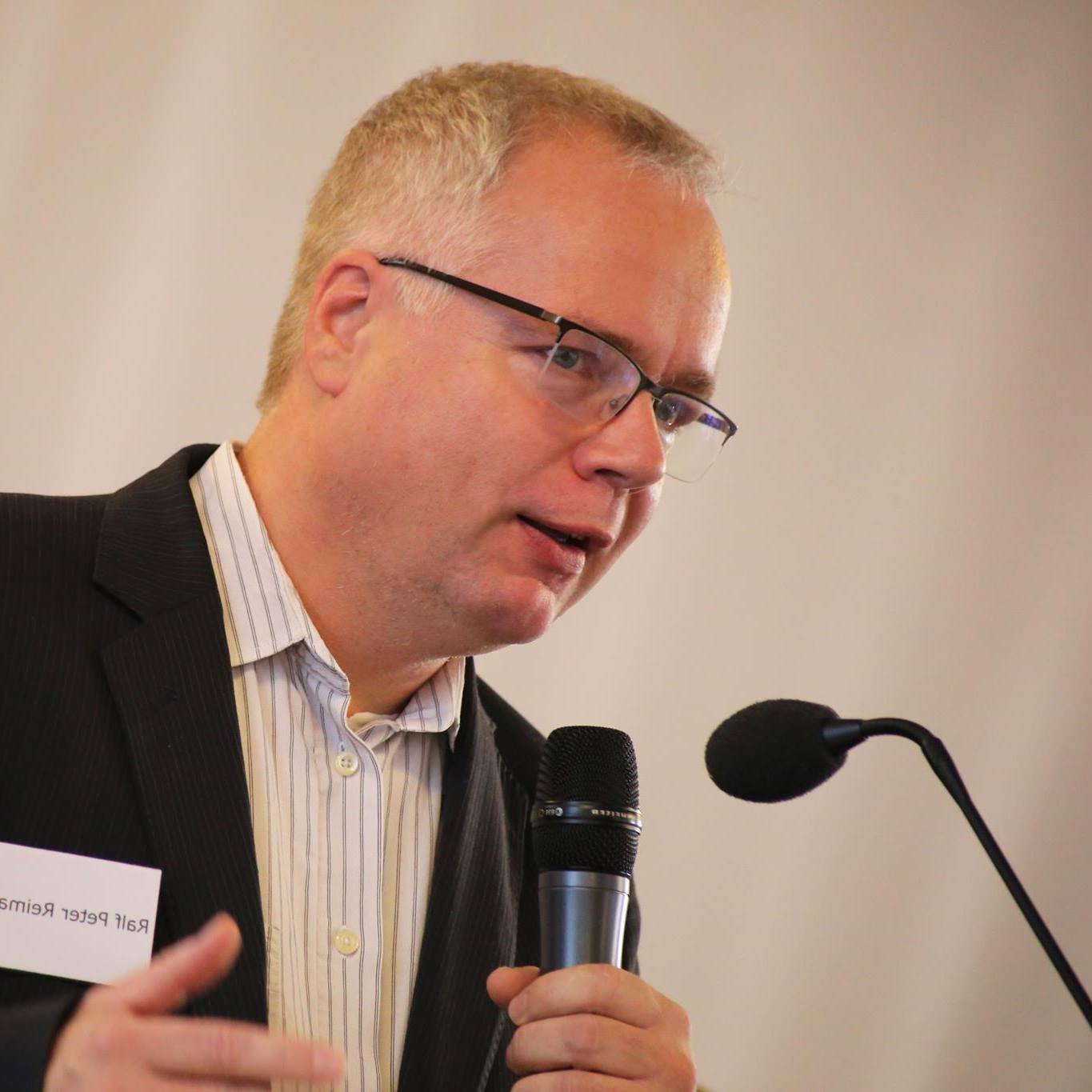On June 9, 2023, Germany’s first AI worship service took place at St. Paul in Fürth during the German Protestant Church Convention (Kirchentag), attracting great interest from the convention attendees and the media. The church was filled to capacity with over 400 people, and after the worship service, there was panel discussion reflecting on the worship service.

Theologian and AI artist Jonas Simmerlein from Vienna initiated this innovative project. The worship service was entirely conducted digitally and presented by AI-generated avatars on a screen. The avatars led the approximately 45-minute worship service, starting from welcoming the congregation to delivering the blessings, including intercessory prayers, recitation of psalms, creed, sermon, and the Lord’s Prayer. Even the entrance music was composed by artificial intelligence. The congregation participated in reciting the Lord’s Prayer and the creed, as well as the psalm, while watching the pre-produced video for the rest of the worship service.
Reactions to the AI Worship Service
The attendees of the AI worship service expressed diverse reactions regarding the use of artificial intelligence. Some found it fascinating and viewed it as an interesting experiment. They were impressed by the technical implementation and the opportunity to experience a worship service entirely created by artificially generated avatars and texts. However, critical voices dominated among the participants. Some criticized the lack of personal presence and empathy that they would expect from a human pastor. They perceived the AI-generated texts as emotionless, impersonal, or simply boring.
Panel Discussion

Jonas Simmerlein explained his approach to creating the worship service, stating that he gradually provided prompts to the ChatGPT AI, specifying the theme of the worship service. The AI then generated the individual texts, which were delivered by the avatars. According to him, 98 percent of the content was AI-generated, with his contribution being minimal. He had already organized a similar worship service on a smaller scale in Vienna, but to his knowledge, this was the first AI-generated worship service in Germany. He considered this worship service as an experiment to gain experience.
Melitta Müller-Hansen, the broadcasting representative of the Evangelical Lutheran Church in Bavaria, expressed criticism of the worship service and the role of artificial intelligence. She emphasized that the art of speaking is lost when artificial intelligence speaks instead of humans. Müller-Hansen missed the dramaturgy in the sermon and a recognizable theological depth in the statements generated by the AI. She was concerned that the worship service would be flattened and functionalized through the use of AI. Melitta Müller-Hansen also raised the question of whether AI speaks in the name of God and criticized the emotionless tone of the AI avatars. She emphasized the importance of personal experience and human presence in worship services.
Theologian and techno-anthropologist Anna Puzio expressed a significantly more positive view of the AI worship service. She regarded the experiment as a „cool thing“ and emphasized the significance of the question of the relationship we as humans build with artificial intelligences. Puzio recognized the potential of AI in the religious context and saw the AI worship service as an opportunity to enable new perspectives and experiences.
I also had the opportunity to share my perspective on the panel, but I would like to further elaborate on some points below.
Is AI like a human?

The term „artificial intelligence“ conveys a very specific view of the technologies used, so it should be used critically. An uncritical approach to the terminology is also evident in the anouncement of the AI Worship service in the program. There, ChatGPT is treated as a pastor and the headquarters of OpenAI is listed as chatbot’s residence.
Such anthropomorphization of the chatbot leads to a theological exaltation of the technology, assuming that it possesses human qualities such as empathy. However, the purpose of ChatGPT (or other AI tools) is generating texts (or images or musical compositions). The ambiguity regarding what ChatGPT is also manifested in the discussion, as different pronouns (he, she, or it) were used to refer to the chatbot.
The AI generated texts were visualized through avatars, creating the perception that the AI was leading the worship service as a pastor. However, these avatars are technical constructs and not individuals with their own personalities. Personally, I found it challenging when the avatar spoke of „us“, refering to itself (or himself or herself) and the congregation.
AI Experiment Reveals What Matters in Worship Services
The exploration of the AI worship service reveals what is really important in a worship services. The AI worship service at the church convention becomes a mirror for in-person or digital worship services held in congregations. Here are some key points:
- The personality of the pastor is essential; otherwise, the avatar would not have been criticized as boring. The same applies to the sermon: ChatGPT provides an average of what is found on the internet. In worship services, more personal elements are expected, rather than general directives like „The text shows us that we should…“
- The avatars were a woman and a person of color. Diversity would also benefit regular worship services. Additional individuals, besides clergy, can be involved in readings and prayers.
- Interactions between the individuals leading the service and the congregation are crucial. In the AI worship service, these interactions were limited.
- The avatars remained static on a screen in the sanctuary. This was perceived as monotonous, whereas in regular worship services, various liturgical positions are assumed, such as at the altar, pulpit, or lectern. The absence of position changes was seen as a drawback.
These are just brief points, but the exploration of AI also involves defining what normally happens in worship services.
Media Coverage of the AI Worship Service
The AI-generated worship service received significant media coverage even before it was conducted.
- https://www.thejournal.ie/ai-chruch-germany-6090108-Jun2023/
- https://arstechnica.com/information-technology/2023/06/chatgpt-takes-the-pulpit-ai-leads-experimental-church-service-in-germany/
- https://decrypt.co/144502/ai-reverends-lead-a-300-people-congregation-in-germany
- Here is a selection of links to reports on the worship service in German.
The Discussion Continues
Jonas Simmerlein has requested feedback from the participants, and he will conduct an evaluation. The AI worship service at the Nuremberg church convention was just the beginning. It was designed as an experiment, and the discussion will and must continue.
Addendum: I have personally worked with AI-generated avatars by feeding AI with my sermon. The avatar delivered my sermon fluently in Spanish whereas my my original sermon was delivered with an accent.


